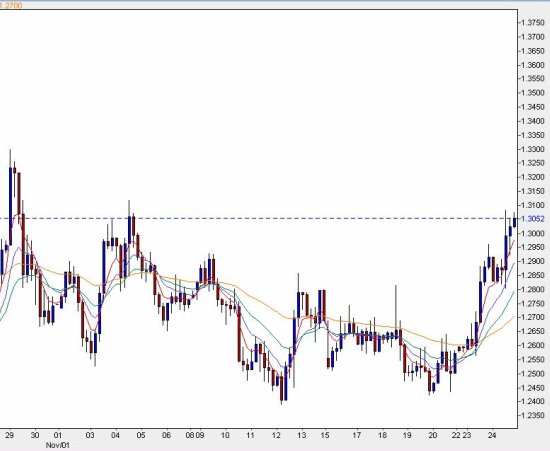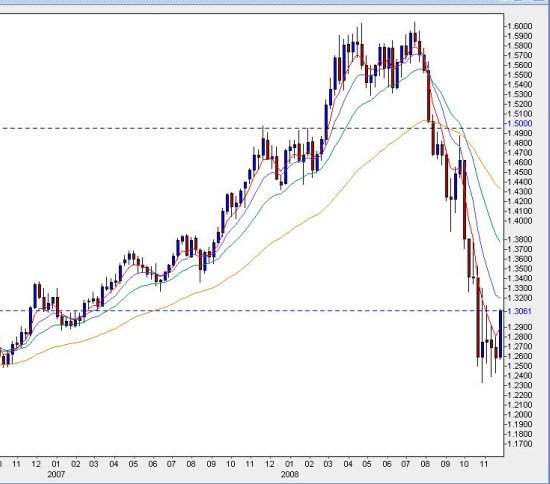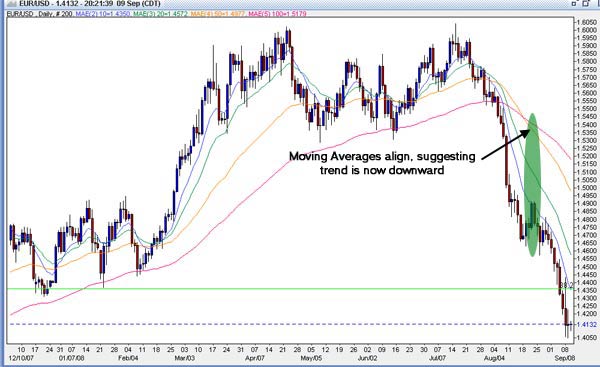The key to my fundamental analysis of the markets is money supply: is money supply going up (inflation) or down (deflation)? As
I've blogged about previously, I'm very much in the inflation camp.
While I am still an inflationist, it is clear we are in a deflationary environment, which I was not expecting; I was simply expecting the ongoing expansion of money supply to find is way into an asset class (
stocks, commodities, housing, etc) and push prices up in that asset class, as is normally the case. Instead, the market's attempts at deflation -- at purging the overinvestments and malinvestments that have been created through excessive expansion of the money supply, thus returning money supply to the level that the market demands, have proven to be dominant. This results in falling prices, a rising currency, and deflation. The Federal Reserve has tried to inflate the markets with all its might, as recent money supply calculations suggest, but
banks have been refusing to lend that money, and thus the deflationary forces have been winning.
Analyzing Where We're HeadedSo how much longer will deflation lasts? Depends on what happens:
1. If the Fed resists the temptation to increase the money supply, it will likely be very sharp but relatively short. The dollar bubble is a 37 year bubble, which started once the dollar fully abandoned the gold standard in 1971. Here in my opinion is
an excellent article on the implications of that.2. If the Fed continues to intervene but deflationary forces prove to be stronger, it will likely be steady deflation for a long time. This is similar to
what happened in Japan when the Bank of Japan tried to resist deflation. However, Mike Shedlock chimes in with some
key differences if America goes deflationary.
3. If the Fed is able to successfully inflate, it will need to find a market to put a bubble into. Given that the US has terrible economic fundamentals --
GDP is faltering, high private and government debt -- it is hard to foresee a bubble in US markets. Perhaps international markets, like commodities, precious metals, foreign
stocks, foreign currencies, etc -- will get an influx of US dollars, thus creating bubbles in those markets. This will result in significant dollar devaluation, as those newly created dollars will just be sold and put into non-US markets. This will push the price of US imports up, and thus will result in lots of price inflation for consumers. It could create an opportunity for US export-based businesses.
4. If the Fed inflates but the market realizes the Fed is just printing with no signs of self-constraint, we'll see hyperinflation. In other words, the Fed will have tried to purge the toxic debt by creating junk money, which devalues everything. Just as banks don't want the toxic debt and are not trading with each other because of it, no one will want "the toxic dollar." In other words, there will be a massive run on the dollar in this scenario, which will send dollar-denominated prices through the roof. This is
the Argentina scenario.
My OpinionsI think there's going to be a combination of #3 and #4. It is critical to note, though, that foreign markets are experiencing a similar problem, and they are taking the central banking solution of trying to inflate the solution away. We are seeing bubble-type activities in certain markets, such as the Japanese Yen, evidenced particularly by big moves in EURJPY.
Dennis Gartman has stated he views EURJPY as a great indicator of the global economy, which I found to be a compelling insight. EURJPY volatility has been huge of late.
In the US, deflationary forces are winning, as evidenced by the rallying dollar, falling commodity prices, and MZM as a money supply indicator, which economist
Stefan Karlsson commented on. Meanwhile, reports of
shortages and price suppresion in precious metals markets, and attempts on the part of government to force banks to lend to each other, which
Mike Shedlock has commented on, are, on the other hand, inflationary arguments.
I do not expect deflation to be reigning for much longer. Government's desire to inflate markets, which is essentially a way of taxing those who hold the currency of the respective economy and transferring wealth to the recipients of the newly created money, is why I'm generally very biased towards viewing inflation as the primary concern. Bernanke has admitted
deflation is not really possible, which suggests he will do whatever it takes to inflate the market. Bernanke has also
acknowledged inflation is a tax, so he seems to favor this viewpoint with the knowledge that he is taxing the public. Meanwhile, members of Congress have reported that they were
threatened with martial law if they did not pass the Paulson Plan, which was eventually passed. Furthermore, we do not see government spending being cut. So, the diminishing tax base is coming as government spending is increasing, which will either require further inflation of the money supply or the sale of additional US debt. As debt is now largely held by foreign countries with tenuous geo-political relationships with the United States -- namely China and Iran -- there is the possibility of economic warfare; foreign debtholders can refuse to continue buying debt, which would also fuel inflation, as the debt would be paid for through further expansion of the money supply.
The always insightful Agora Financial has
stated that they expect oil to go to $50 and then $200 within 36 months. I like that assessment quite a bit.
Thoughts on Trading This EnvironmentMy primary concern is wealth preservation. With that in mind, I'm primarily looking to protect against dollar devaluation. As a result, here's what I'm doing:
1. I'm viewing deflation as a great opportunity to accumulate precious metals. Gold and silver are great hedges against inflation, and even in deflationary environments, they fall less than other asset classes, and thus still offer opportunities for those who own gold and silver to gain purchasing power (i.e. gold and silver may be falling in price, but everything else is falling faster). I don't trade precious metals, but I "invest" in them -- meaning I accumulate them and don't plan on selling until at least a few years out.
2. I'm particularly concerned with dollar devaluation, and thus look for markets in which excess US dollars would find their way into. For a while, EURUSD was great for this. Now the Eurozone clearly has their own problems, though I think Asian currencies are going to pick up some dollars, and thus I've been trading the Yen, and am in
a Yen trade now.
In deflationary environments, I'll be trading less, and will largely be out of the market, instead looking for opportunities to accumulate precious metals and cash. If you're into trading deflation, markets where the money supply is being pulled from may prove to be great short opportunities. As money supply contractions have a natural tendency to come from bubble markets, financial instruments and the US housing sector are natural opportunities. For those who believe the US recession of 2002/2003 was not complete -- meaning the
NASDAQ bubble was not fully deflated -- US tech
stocks may have some room to go down.
As an inflationist, I'll be in foreign currencies and precious metals. I'll buy and hold metals, and will enter currencies when they look bearish for the US dollar, my home currency. I also previously noted some
ETFs on the US stock markets that I thought would be worth considering in an inflationary environment.







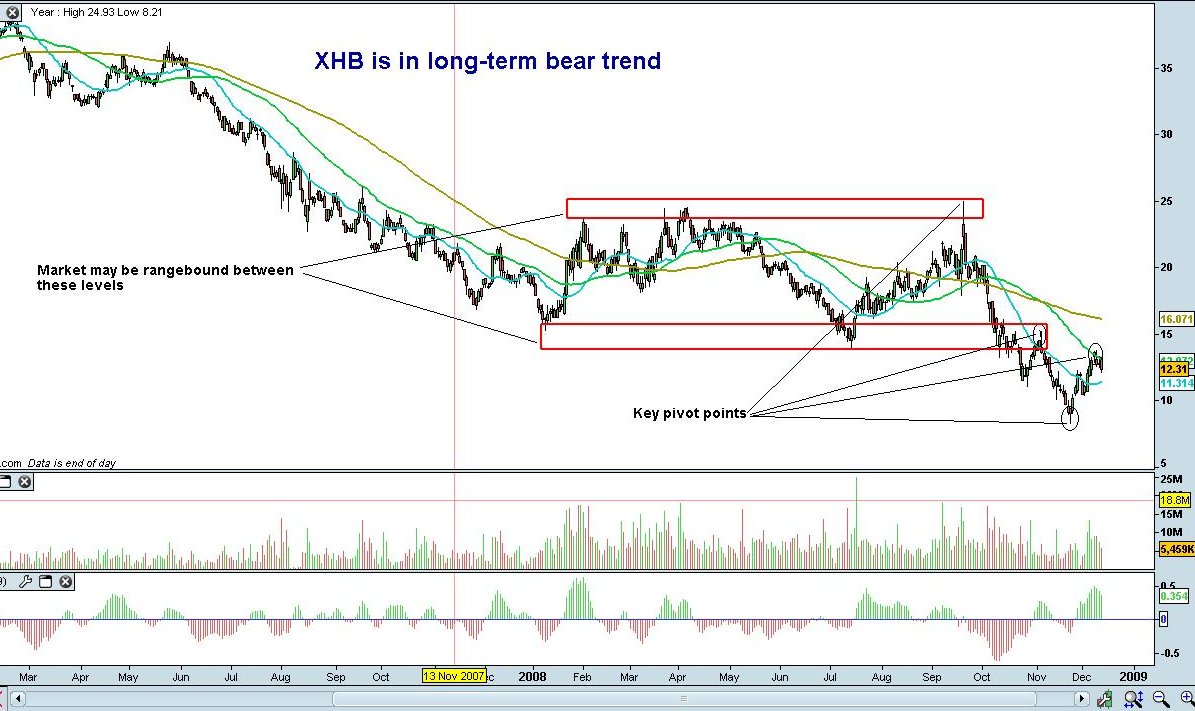
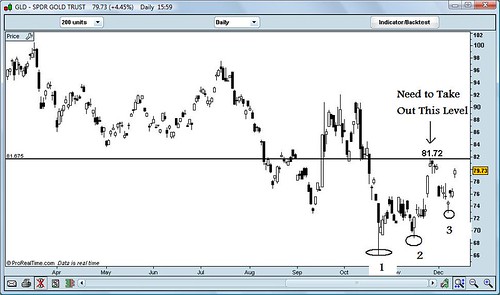
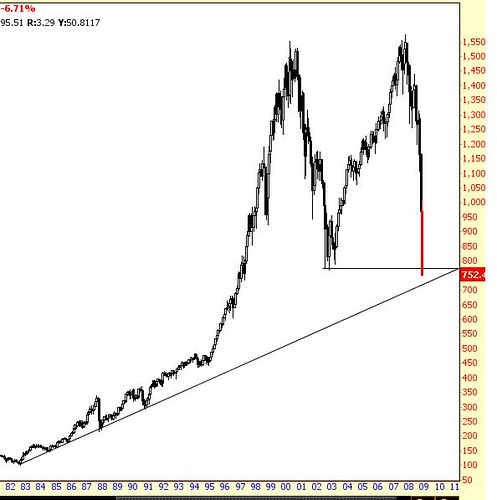
 Conversely, it would lead to greater focus on profitability rather than financial ratios, and a corresponding focus on dividends rather than valuations.
Conversely, it would lead to greater focus on profitability rather than financial ratios, and a corresponding focus on dividends rather than valuations.